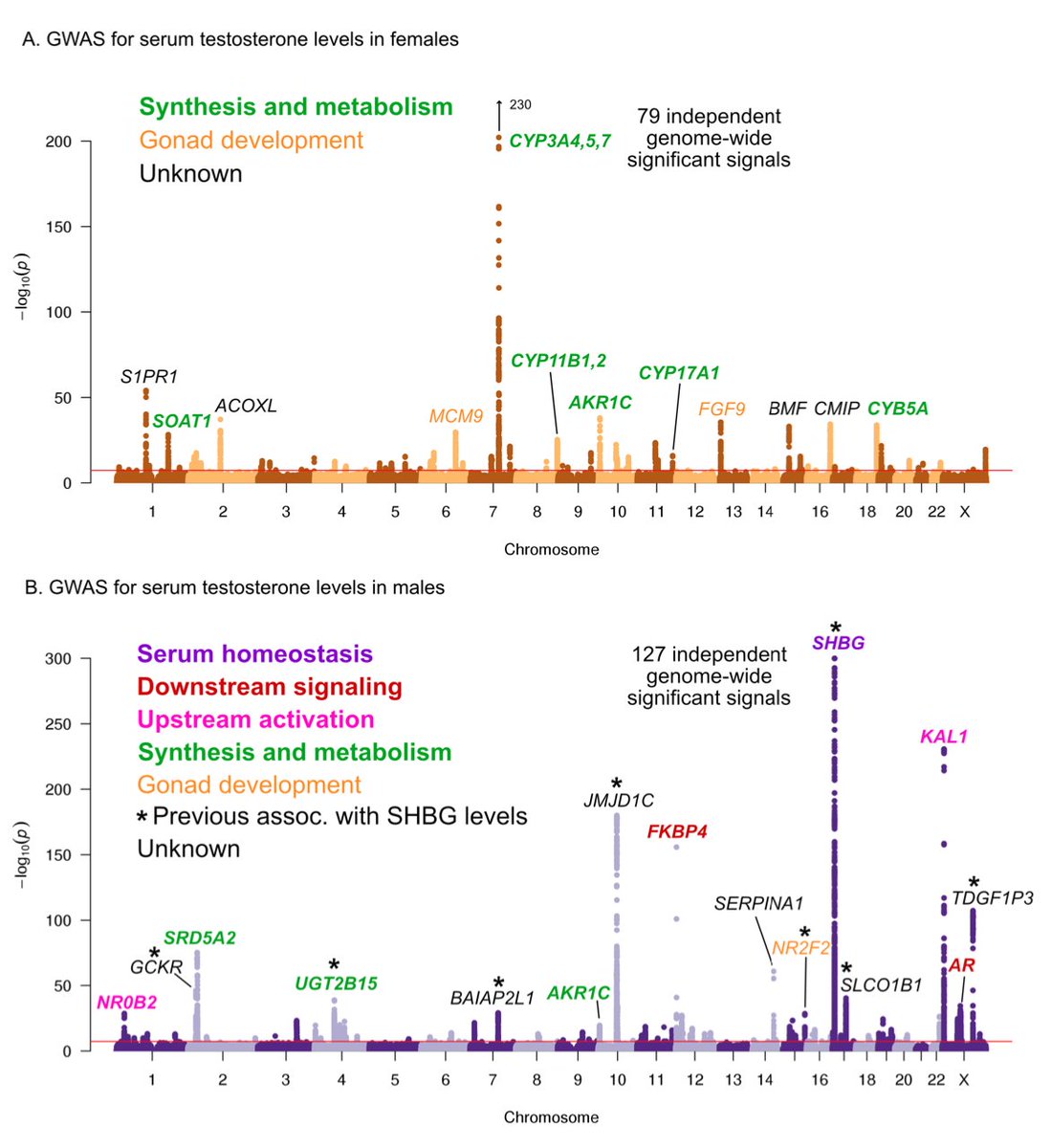
Today marks the 25th anniversary of Neil Risch and Kathleen Merikangas' classic 2-page paper that articulated GWAS as the future of human genetics. A short thread.
www-leland.stanford.edu/~huatang/gene2…
www-leland.stanford.edu/~huatang/gene2…

Risch and Merikangas argued that linkage mapping had been ineffective at finding complex trait loci, and that association mapping would be far more powerful. In this power analysis they compared allele-sharing (linkage) and TDT (association) tests using trios and quartets: 

They showed that the association tests are uniformly more powerful. Roughly speaking this is because it's easier to measure mean shifts than correlations: for small effect size gamma-1=beta the association signal is proportional to beta, while for linkage it's beta^2.
Based on this logic, they argued that association mapping was the only way to achieve successful mapping of complex trait loci -- and that this must be performed genome-wide. 

Of course the problem in 1996 was that there was no genome sequence, no genome-wide panel of SNPs, and no technology that could plausibly genotype a million variants. So this vision was like science fiction at that time. 



Incidentally, as far as I know, this is also the first paper to suggest the conventional genome-wide significance threshold of 5e-8. 

It's hard to overstate the impact of this 2-page thought-experiment in driving the direction of human genetics over the next decade and beyond.
It was truly the paper that launched a thousand chips
It was truly the paper that launched a thousand chips
I also have a debt of gratitude to Neil, as I became interested in human genetics through a couple of classes that he taught at Stanford in 97-98 when I was a student. He was a talented teacher, and I believe 5 current Stanford faculty were in that 1998 statgen class.
• • •
Missing some Tweet in this thread? You can try to
force a refresh






